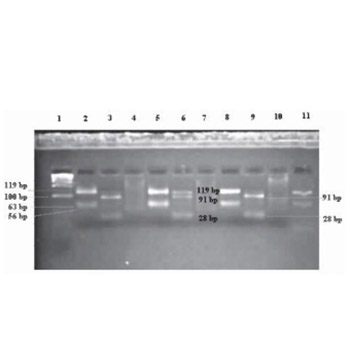Association of Mannose-Binding Lectin 2 (mbl2) gene heterogeneity and its serum concentration with osteoporosis in postmenopausal women
DOI:
https://doi.org/10.17305/bjbms.2014.2292Keywords:
mannose-binding lectin, polymorphism, osteoporosisAbstract
The aim of the study was to detect prevalence of MBL2 exon 1 (codons 52, 54 and 57) genetic polymorphism in postmenopausal women in Bosnia and Herzegovina and its possible role as genetic risk factor for susceptibility to occurrence of osteoporosis in this study group. Also, we investigated association between MBL serum concentrations and osteoporosis in postmenopausal women. Genetic codons’ variations were determined by PCR-RFLP and MBL in serum was measured by ELISA method in 75 postmenopausal women (37 with osteoporosis and 38 apparently healthy, non-osteoporotic women serving as a control). Serum MBL levels were not significantly different between osteoporosis and control group (492 (37-565.1) and 522.6 (477-559.4) ng/mL respectively, p=0.206). Genotype frequencies were not significantly different (p=0.997) between the studied groups of postmenopausal women. Genotype frequencies A/A, A/o and o/o in osteoporosis group were 0.576; 0.405; 0.018 and in control group 0.562; 0.412; 0.026, respectively. Frequencies of A and o allele were 0.78 and 0.22 in osteoporosis and 0.77 and 0.23 in control group. The results do not suggest association of functional polymorphism of MBL2 gene and MBL serum concentration with osteoporosis in postmenopausal females.
Citations
Downloads

Downloads
Additional Files
Published
How to Cite
Accepted 2017-07-19
Published 2014-05-20









